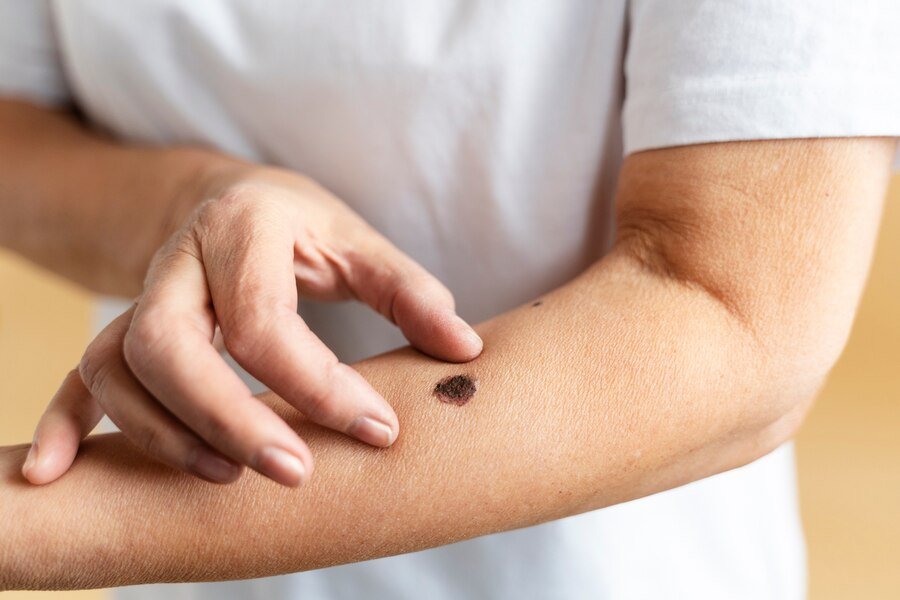Moles are small, colored (dark brown) spots that appear on the skin, typically beginning in childhood. Most people have them and they’re usually harmless. However, they may be a cause of concern if they change in shape, color or size.
Moles can grow on any part of your body, such as the scalp, in between fingers and toes and beneath the nails, as well as under arms
SYMPTOMS OF A MOLE
The main characteristic of a mole is that it is a minor brown spot on the skin. But moles may vary in terms of:
Color and texture
Moles can be brown, tan, black, blue, red or pink in color. In regards to the texture, they may be wrinkled, flat, smooth or raised. Some moles have hair growing out of it.
Shape
A mole has a round or oval shape.
Size
They are typically less than 1/4 inch (about 6 mm) in diameter. Moles that appear in newborn babies may be bigger in size and cover a large space of the body – known as congenital nevi.
WHEN TO GET A MOLE CHECKED?
An unusual mole that may indicate skin cancer (melanoma) has irregular edges or an asymmetrical shape. Additionally, if the mole changes its color, size, or height then you may need to get it checked.
The following ABCDE guide can help assess whether a mole is harmful or not:
- A for asymmetrical shape – one half of the mole is different in shape compared to the other half.
- B for the border – moles with irregular, notched or scalloped edges.
- C for color changes – if it has grown into a different color or may show even or several colors. have many colors or have uneven color.
- D for diameter – if the mole becomes larger than 1/4 inch (about 6 mm).
- E for evolving – check for a mole that changes in different aspects such as size, shape, color or height. And any other symptoms such as itchiness or bleeding.
Cancerous moles, also known as malignant moles, differ in appearance. Some may show all the signs mentioned above. While others may have only one or two uncommon traits.
TREATMENT FOR MOLES
Treatments for moles are needed when it may be a sign of melanoma.
You can get it checked by a certified dermatologist if you see any concerning symptoms and signs listed above. Typically, it requires surgery to remove the mole if it is skin cancer.


